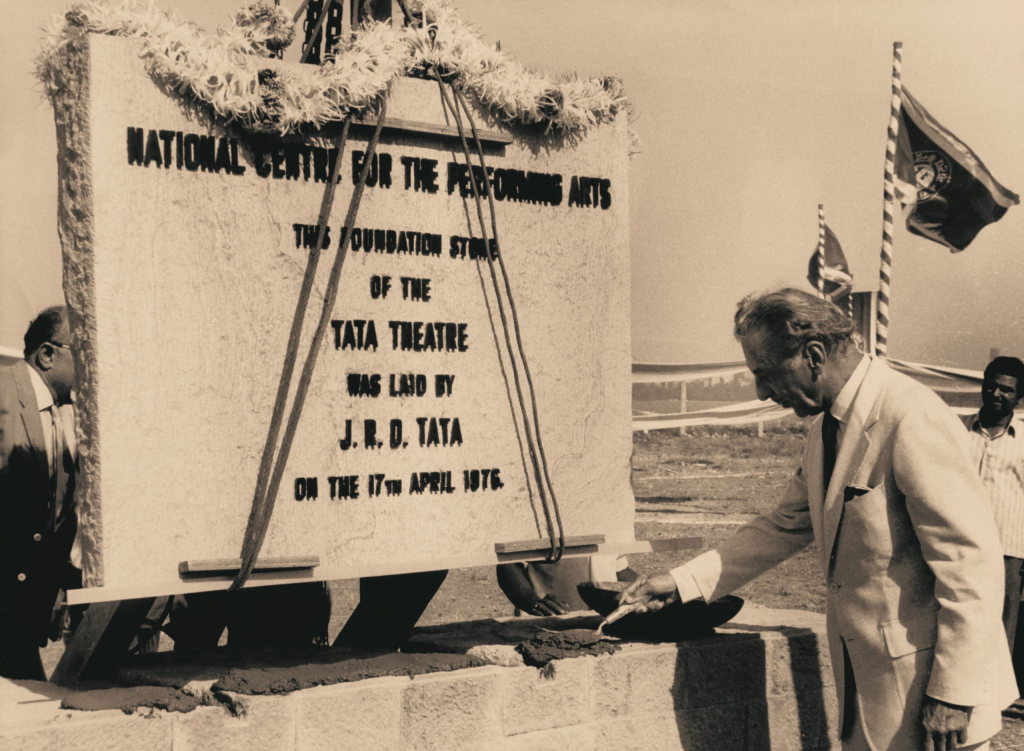Introduction
Ratan Tata, the most well-known industrialist and chairman emeritus of Tata Sons passed away on October 9th 2024, at the age of 86. He was being treated for a prolonged illness at Breach Candy Hospital in Mumbai.
His contributions to Indian art, architecture & design will have an everlasting influence in the country. Not merely a captain of industry, he had a vision of how to shape culture through art, creativity and heritage conservation. It was not just the financial assistance he provided; it was a desire to envelope modern Indian identity with cultural values. Tata indeed acted as a key patron of the arts, supporting an active artistic community, funding significant cultural institutions and preserving the Parsi legacy through his support.
1. Family Legacy
Perhaps the best-known of the country’s major cultural institutions, and certainly one of the richest in European and Far Eastern art among its collections, is Chhatrapati Shivaji Maharaj Vastu Sangrahalaya (CSMVS) museum which owes a major proportion of its holdings to the benefactions of the Tata family. The museum houses over 5,000 works from Egypt, Greece, Rome, Africa and Far Eastern countries including significant collection of Chinese porcelains and bronzes on the donation made by Sir Ratan Tata in 1922 of over 3,500 artworks. Quite simply, Sir Ratan Tata was an enthusiastic art collector and, during his travels, he assembled a fabulous collection of European paintings, Art Deco works, manuscripts, textiles, weaponry and porcelain. The museum said in a statement that “His acquisitions reflected a cosmopolitan taste, embracing various art forms that resonated with him.” (tata)

Whereas Sir Dorab Tata, who was passionate about art and a connoisseur in his own right, left his enviable collection of over 1,400 items to the museum posthumously. The museum is now home to the country’s largest collection of European paintings, due in large part to such generous donations. In recognition of the benefactors, the two galleries on either side of the main entrance are called Sir Ratan Tata and Sir Dorab Tata Gallery.(tata)
2. Ratan Tata’s Commitment to the Performing Arts
The National Centre for the Performing Arts (NCPA) in Mumbai, established by JRD Tata and continuing with his son Ratan Tata was another illustration of how much he encouraged art. The NCPA came to be a centre for Indian and Western performing arts with the hope of touching base with distinct cultures. The institute and others like it, as supported by the Tata Group maintained the arts in public domain and provided a place for artists to build stature in performing and publicity. The result was a steady pulse of creativity, even including the young unsung talents in the Indian circuit — all thanks to Tata’s patronage that went beyond mainstream artists. (Tata Trusts Journey), (India Today), (Business Upturn)

3. Ratan Tata’s Vision for Architecture and Cultural Integration
Ratan Tata himself was graduated in Architecture form Cornell University College of Architecture. The design of public and corporate spaces by Tata is an indication of the kind of lasting influence in architecture that combines functionality with cultural expression. His leadership saw the Tata Group define an architectural aesthetic that celebrated both modern and traditional design. It is evident from the structure of Tata corporate offices which were meant to be efficient work places as well as interiors that reflected in alignment with the ethos of the organisation. Architecture, for Ratan Tata, was not just a medium to build infrastructure — it was a tool that humanised social interaction and cultural exchange ensuring an identity when within the place! He further championed initiatives that aimed to improve the use of public spaces and add community value. (Tata Trusts Journey)

Sustainable Design was another domain in which Tata has excelled. A champion of green architecture, he promoted sustainable building practices among other Tata companies. By developing a range of projects such as green residential townships and environmentally responsible corporate buildings, Tata demonstrated that it was possible to build sustainably in the midst of India’s frenetic urban expansion. His foresight inspired many architects and designers to take into consideration the effects their creations would have on the world, increasing global recognition of environmentally-sound building practices.

The case of affordable housing is another area where Tata applied his design philosophy. He helped lead efforts to provide low cost housing to families ailing in the economic development boom, transitioning them from slum homes that perpetuated disease and reduced life expectancy. These projects contained inexpensive, skilful and sustainable housing solutions for urban India that were delivered without compromising aesthetics. Tata strived to bridge the gap between luxury and necessity, by ensuring affordability without compromising on quality, thus establishing a benchmark for the housing industry. (Tata Housing)

4. Ratan Tata’s Bold Vision and the Legacy of the Tata Nano
This brought to the industrial design sector where Tata extended its impact in product design and innovation which was focussed on enhancing quality of life. What was arguably his riskiest move design-wise; the Tata Nano project meant to create the cheapest car in the world. The project, which never got the commercial success that was envisaged earlier, echoed Tata’s dream to democratise design. In opening up transportation to the wider public, Tata subverted existing marketplace conventions and showed how design can be a force for societal good. It also demonstrated frugal innovation, given the strong resource constraints in product design.

5. Ratan Tata’s Legacy in Education and Mentorship
Mentorship and education were central to the strides toward fostering inspirational young creativity that Tata made. A lover of design, he also had a role in shaping institutions like the National Institute of Design (NID) at Ahmedabad to which he contributed an idea of how aesthetics can blend with functionality. It was especially important to him for mentoring young designers and convince them to think about the design as something integrated, including cultural, social, and environmental aspects. Similarly, Tata was instrumental in instilling an attitude of distinctive innovation and considered design among generations to come–thanks, in part, to its introducing so many breakthrough products throughout the novelties of their day. RISD Global
6. Tata Trust
Ratan Tata’s philanthropy was a contribution to cultural development. As chairman of Tata Trusts he ensured that massive grant funds went into cultural projects, art restoration and heritage conservation. These included the restoration of historical buildings, a focus to promoting the museums and archival documentation of traditional crafts all which aimed at preserving the past by allowing it to coexist with modernity. The Tata Trusts also funded projects in art for social development, like, arts-based therapy programmes and skill training in traditional crafts for marginalised communities. It showed the significance of art as a tool for social change and empowerment by these initiatives of Tata. (Tata Trusts Journey)

What does the demise of Ratan Tata mean to the creative world?
The demise of Ratan Tata is not just the end of an era in corporate leadership but as well for communities that reaped from his benevolence. His intimate knowledge of the world at ground level brought a unique personal touch to his involvement with the arts sector. More than just simply an exercise in corporate social responsibility though; this is a man who has a true vision for the cultural development of his country, and a real sense of how art, architecture and design can work on the wider fabrics of society. The fear is that his passion and personable touch with cultural projects may not be so easy to emulate following his death. So, though Tata Trusts and the Tata group will keep backing cultural projects– if in any case not with the same enthusiasm as Ratan Tata brought sharp unique vision to these projects that is hard to come by. The loss of Tata in those communities associated with art, architecture and design signifies the end of a period where aligning values were held alongside commercial gains focused on culture. This is a challenging legacy the future leaders of the Tata Group will have to live up to, and do so while maintaining everything he stood for. Such dedication to the preservation of cultures, responsible design, and inclusive innovation would greatly contribute in ensuring that Ratan Tata remains evergreen even beyond his time and not just a story told around dinner tables.
Conclusion
The industrialist Ratan Tata was a philanthropist in art, architecture, and design as well. A cultural futurist, he understood the power of beauty, heritage and changing lives. A tireless cultural gatkeeper; a champion for green architecture and inclusive design, his legacy has helped sculpt the contemporary India we live in. Just because we have lost an iconic leader, it is the end of an era for the artist and design fraternity — this is how Ratan Tata’s death leaves a devastating mark. His loss is one the world grieves, and yet it is important that values in which he believed need to guide the future so that his legacy can provide a vision for how art, architecture and design are practiced in India.





